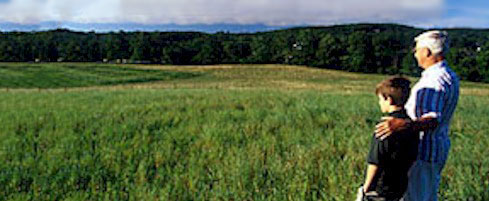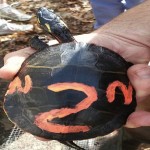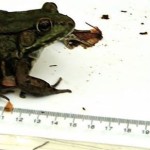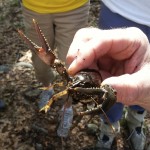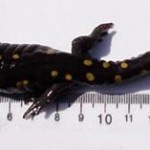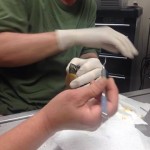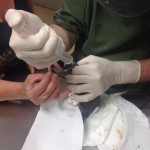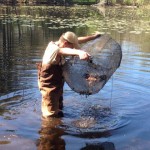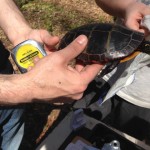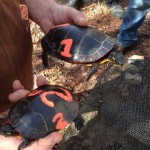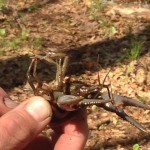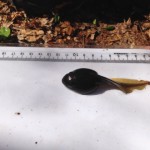An Update on Other Species Observed at Beals Preserve Wildlife Survey Project
Published on August 19, 2014 by Eileen Samberg
The wildlife survey project currently ongoing at Beals Preserve is focusing primarily on reptiles and amphibians. But a number of other species have been observed by project volunteers. Here is a listing of these observations to July 30, 2014. Thank you volunteers for all the time and effort you have put into this project and the wide variety of observations you have made.
BIRDS
American Crow
American Goldfinch
American Robin
American Woodcock
Barn Swallow
Black Capped Chickadee
Canada Geese
Catbird
Cedar Waxwing
Common Grackle
Common Yellowthroat
Eastern Bluebirds
Eastern Phoebe
Great Blue Heron
Great Crested Flycatcher
Green Heron
Hairy Woodpecker
Hawk with broad wings
Hummingbird
Indigo Bunting
Kingfishers
Kingfishers, Belted
Mallards
Merganzers
Mourning Dove
Northern Flicker
Northern Rough Winged Swallows
Owl, Barred
Pileated Woodpecker
Red Bellied Woodpecker
Red Tailed Hawk
Red Winged Blackbirds
Rose Breasted Grosbeaks
Sharp Shinned Hawk
Song Sparrows
Tree Swallow
Tufted Titmouse
Wood duck
Yellow Warblers
Wrens
MAMMALS
Coyote
Deer
Mole, Star Nosed
Field Mouse
Mouse
Otter
Rabbit
Shrew
Vole
INSECTS
Barklouse, Common Herd
Beetles
Beetles, Black
Beetles, Sexton (Burying Beetles
Beetles, Carrion
Blue Dasher
Caterpillar
Centipede
Crickets
Dragonfly
Eastern Commas
Eastern Tailor Blues
Grasshopper
Grubs
Katydid
Millipedes
Mosquitoes
Moth, Leconte’s Haploa
Moth Caterpillar, Winter
Mourning Cloak
Satyr, Little Wood
Spider
Spider, Wolf
PLANTS
Buttercups
Canada Mayflowers
Cinnamon Fern
Greater Celendine
Indian Paintbrush
Jack in the Pulpits
Lily of the Valley
Pink Lady Slippers
Solomon’s Seal
Spotted Wintergreen
Starflowers
Water Lilies
Wild Geranium
Yellow Cinquefoil
OTHER ANIMALS
Crayfish
Shiners
Worms
Update on Beals Preserve Wildlife Survey Project
Published on June 5, 2014 by Eileen Samberg
In March of this year, SOLF began a wildlife survey of reptiles and amphibians at Beals Preserve. The project was originated and is being directed by SOLF member Lawrence Spezzano of Southborough with the generous assistance of wonderful volunteers from Southborough and other communities!
Lawrence reports that after two months of data collection, amphibian diversity has been impressive with 7 frog species and 4 salamander species found, which is nearly 50% of the 23 species recently documented in Massachusetts. Frog species found, collected in, or near, the transects include: American Toad, Spring Peeper, Green, Grey Tree, Pickerel, Leopard, and Bullfrog. Salamander species found include Red Back, Dusky, Four-toed , and Yellow-spotted.
Reptiles have been more rare so far, in this generally cool spring, with 12% of 24 species observed including the more cosmopolitan Painted and Snapping turtles and Garter Snakes(no surprises, there!). Going forward, June and July should provide more wonderful examples of local reptiles as the WHIP plywood transects provide ideal cool and humid microhabitats. Lawrence expects the warmer weather to draw out more activity and the volunteers have already begun to see evidence of this when piloting turtle traps in the Ice Pond, finding discarded skins and and observing reptiles basking.
SOLF volunteers will continue to collect evidence, including bird, mammal, insect and plant diversity, over the course of the summer and fall. More volunteers are needed, so contact SOLF at info@solf.org, if interested. These invaluable data already suggest relationships among species, their gender, length and mass, which could drive future conservation efforts in Southborough and neighboring towns! Could the Beals Preserve be a major resource supporting salamander maturity, frog reproduction and reptile hibernation for populations throughout central Massachusetts? Stay tuned!
You can see some photos of the survey below.
- A painted turtle marked for future identification
- Bullfrog
- Crayfish at the ice pond
- A spotted salamander photographed by volunteer Carl Guyer
Turtle with abscessed ear
Published on May 17, 2014 by Eileen Samberg
The SOLF Wildlife Survey project encountered a female Eastern Painted turtle with an ear abscess near the pond at the Beals Preserve on May 11. The images show it being treated by Dr. Greg Mertz at the New England Wildlife Center in Weymouth.
Are you interested in salamanders?
Published on May 17, 2014 by Eileen Samberg
If you are interested in salamanders and more information about them, here is a link to the Partners in Amphibian and Reptile Conservation.
Checking the Turtle Trap at Beals Preserve Ice Pond, May 11
Published on May 13, 2014 by Eileen Samberg
The images below show volunteers checking the turtle trap at the ice pond at Beals Preserve on May 11. Three painted turtles, a crayfish, several bull frog tadpoles, and some shiners were found. After being documented, they were returned to the ice pond.
- Checking the turtle trap
- A painted turtle
- Identifying painted turtles
- Crayfish
- Bull frog tadpole
More Information on Volunteering to Help for Our Wildlife Survey at Beals Preserve
Published on March 13, 2014 by Eileen Samberg
Beginning March 29, we will place observation sites at regular intervals at a pond edge and meadow to provide a sample of amphibians and reptiles that live on Beals Preserve. Because amphibians and reptiles use their habitats in different ways and can be active both day and night, we are calling on volunteers to help us collect data 3 times daily (9-10 am, 2-3 pm and 7-9 pm (just after dusk). This exciting opportunity will both provide valuable insight into how our preserve is being used by reptiles and amphibians and provide a unique chance to explore nature and its remarkable diversity.
All Volunteers will be provided training and support as needed.
Volunteers under the age of 18 will require parental permission and if under the age of 14 will need to be accompanied by an adult. Attending a training session will be mandatory. Volunteers are responsible for transportation to and from the Beals Preserve.
Training overview:
-
Review of safety precautions including methods to avoid exposure to ticks and poison ivy.
-
Demonstration of the methods of data collection at the various observation sites
-
How to look for herps while walking along installed transects.
-
Observation and data collection of specimens collected in sunken buckets including measuring, weighing, and taking pictures before releasing.
-
-
Overview of record keeping: data on total number of individuals, individual mass, length, and gender before release of the individual.
-
Instructions on safety guidelines on how to handle amphibians and how to proceed if dead animals are found.
Additional notes
We are aware some volunteers may be fine handling frogs and salamanders but not like snakes. We can schedule around this preference as there are separate observation areas for snakes.
If you would like to volunteer, or would like more information, please contact Freddie Gillespie.
Ideally we are looking for volunteers to commit to one time slot a week but even less frequent participation will be welcomed.
The project is being planned and guided by Lawrence Spezzano Jr., M.Sc., M.Ed, a Science Teacher at Boston Latin School and assisted by Dr. Acacia Alcivar Warren, a One Health practitioner and conservation geneticist.

